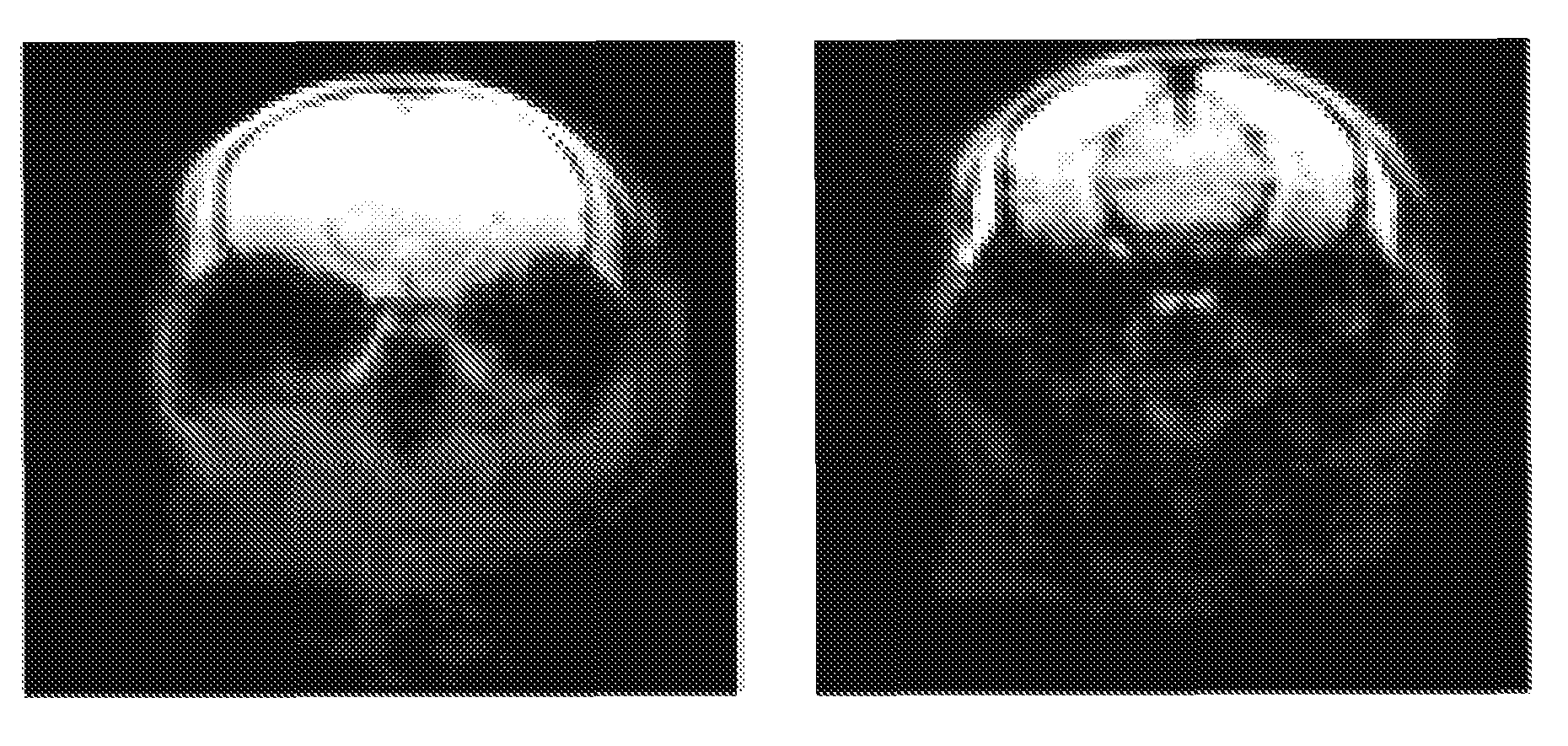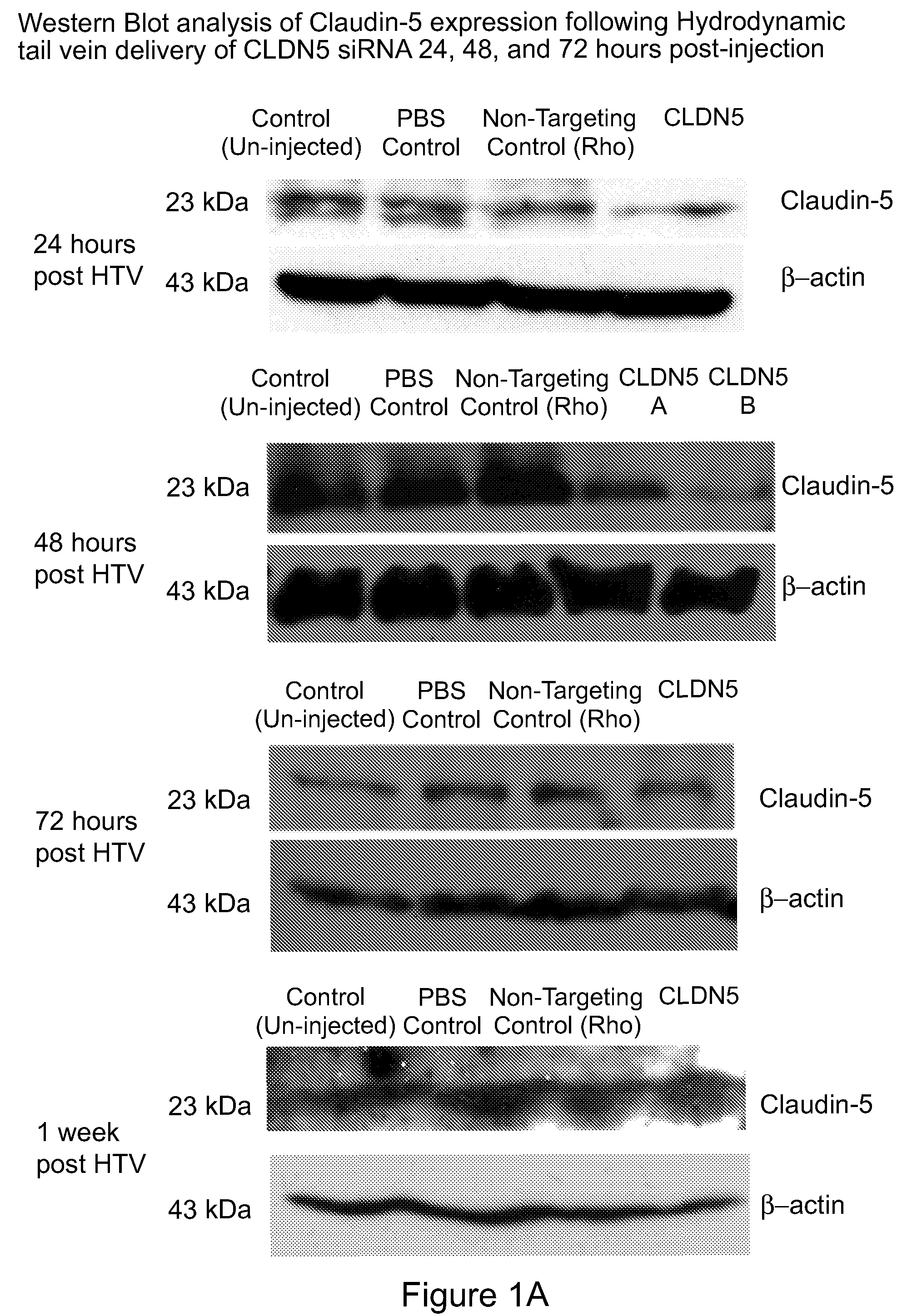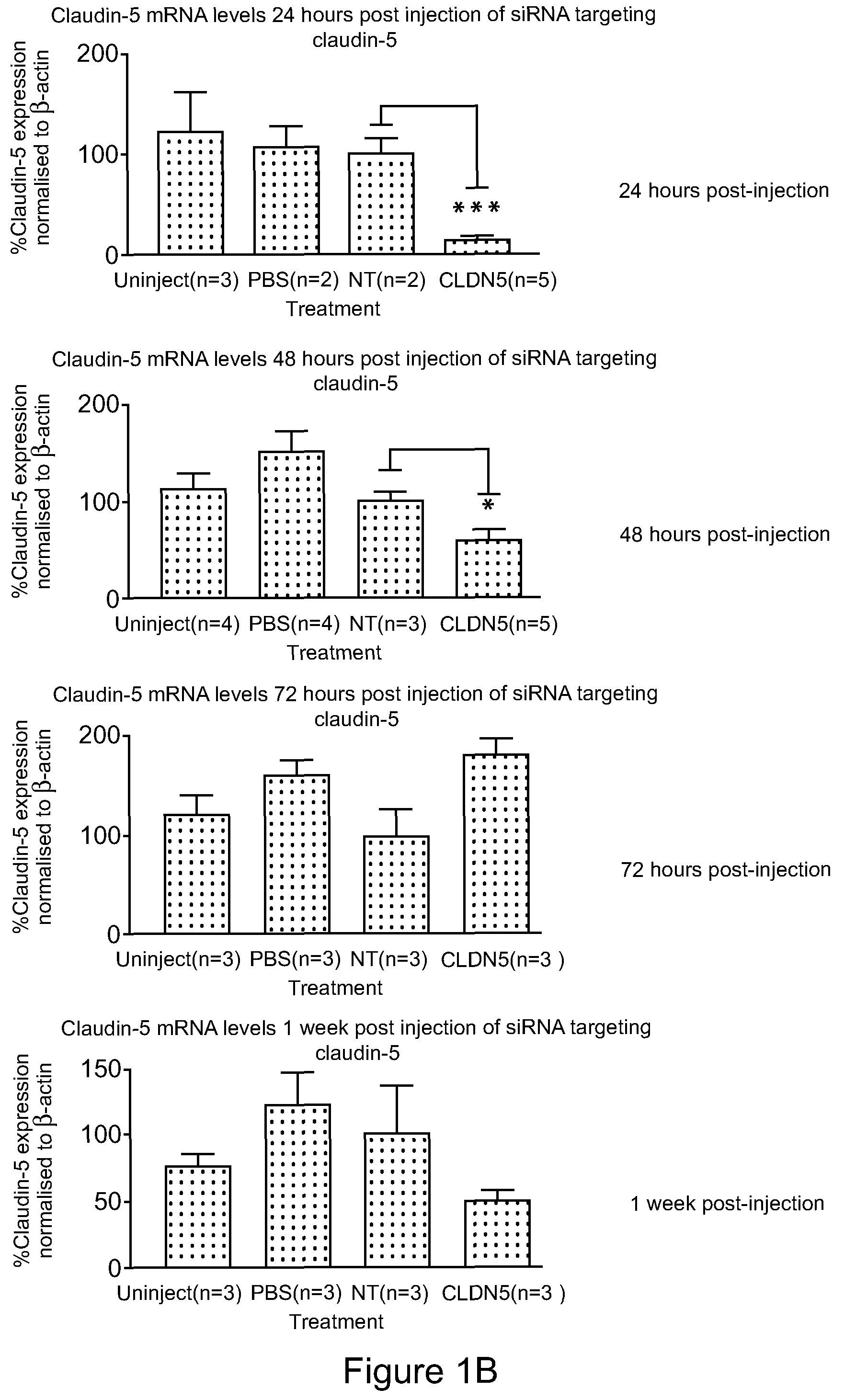Method for Opening Tight Junctions
a tight junction and opening technology, applied in the field of tight junction opening, can solve the problems of incomplete breakdown of the blood-brain barrier, disastrous consequences for brain function, and attempts made without a comprehensive understanding of the structure of the tight junction (tj), and without transcript ablating technology
- Summary
- Abstract
- Description
- Claims
- Application Information
AI Technical Summary
Benefits of technology
Problems solved by technology
Method used
Image
Examples
example 1
In Vivo Suppression of Claudin-5 Expression at the Blood Brain Barrier of C57 / BL-6 Mice Using Systemic Hydrodynamic Tail Vein Delivery of siRNA Targeting Claudin-5
Materials
[0200]Web-Based siRNA Design Protocols Targeting Claudin-5
[0201]siRNAs were selected targeting conserved regions of the published cDNA sequences. To do this, cDNA sequences from mouse were aligned for the Claudin-5 gene and regions of perfect homology subjected to updated web-based protocols (Dharmacon, Ambion, Genescript) originally derived from criteria as outlined by Reynolds et al., (2004). Sequences of the claudin-5 siRNA used in this study were as follows:
Sense sequence:CGUUGGAAAUUCUGGGUCUUUAntisense sequence:AGACCCAGAAUUUCCAACGUU
[0202]Non-targeting control siRNA targeting human rhodopsin was used as a non-targeting control since rhodopsin is only expressed in photoreceptor cells in the retina and at low levels in the pineal gland of the brain (O'Reilly, M et al., 2007):
Sense sequence:CGCUCAAGCCGGAGGUCAAAnti...
example 2
Delivery of Thyrotropin Releasing Hormone (TRH) across the Blood Brain Barrier (BBB) to Claudin-5 Suppressed Mice
Materials & Method
Thyrotropin Releasing Hormone (TRH) (Sigma Aldrich, Ireland)
[0238]TRH has been proposed as having distinct neuroprotective effects. It also induces “wet dog shake” behavioural outputs when administered to rats. However, TRH has several disadvantages, including its instability and resulting short duration of action and its slow permeation across the BBB.
Delivery of TRH to Claudin-5 Suppressed Mice
[0239]The protocol of Example 1 was followed to produce transiently claudin-5 suppressed mice.
[0240]48 hours post-delivery of siRNA targeting claudin-5 or a non-targeting siRNA, a 200 μl of a solution containing 20 mg / kg Thyrotropin Releasing Hormone (TRH) was injected to the claudin-5 suppressed mice. TRH was injected in the tail vein and immediately, the behavioural output of mice was assessed by filming them in a clear Perspex box.
Results and Conclusion
[0241]A...
example 3
In Vivo Suppression of Claudin-1 Expression at the Blood Brain Barrier of C57 / BL-6 Mice Using Systemic Hydrodynamic Tail Vein Delivery of siRNA Targeting Claudin-1
Materials:
[0244]Web-Based siRNA Design Protocols Targeting Claudin-1
CLDN1 (1) target sequence:GCAAAGCACCGGGCAGAUA:Sense sequence:AUAGACGGGCCACGAAACGUUAnti-sense strand: CGUUUCGUGGCCCGUCUAUUUCLDN1 (2) target sequence: GAACAGUACUUUGCAGGCA:Sense strand:ACGGACGUUUCAUGACAAGUUAnti-sense strand:CUUGUCAUGAAACGUCCGUUUCLDN1 (4) target sequence:UUUCAGGUCUGGCGACAUU:Sense sequence:UUACAGCGGUCUGGACUUUUUAnti-sense strand: AAAGUCCAGACCGCUGUAAUU
Methods:
[0245]The protocols used were identical to the protocols used in Example 1.
Results and Conclusions:
[0246]Results are shown in FIGS. 3A, 23 and 24.
[0247]This example shows that siRNA directed against claudin-1 causes an increase in paracellular permeability at the BBB to a molecule of 562 Daltons but not 4,400 Daltons. Suppression of claudin-1 appears to cause a size-selective opening of the ...
PUM
| Property | Measurement | Unit |
|---|---|---|
| molecular weight | aaaaa | aaaaa |
| molecular weight | aaaaa | aaaaa |
| time | aaaaa | aaaaa |
Abstract
Description
Claims
Application Information
 Login to View More
Login to View More - R&D
- Intellectual Property
- Life Sciences
- Materials
- Tech Scout
- Unparalleled Data Quality
- Higher Quality Content
- 60% Fewer Hallucinations
Browse by: Latest US Patents, China's latest patents, Technical Efficacy Thesaurus, Application Domain, Technology Topic, Popular Technical Reports.
© 2025 PatSnap. All rights reserved.Legal|Privacy policy|Modern Slavery Act Transparency Statement|Sitemap|About US| Contact US: help@patsnap.com



